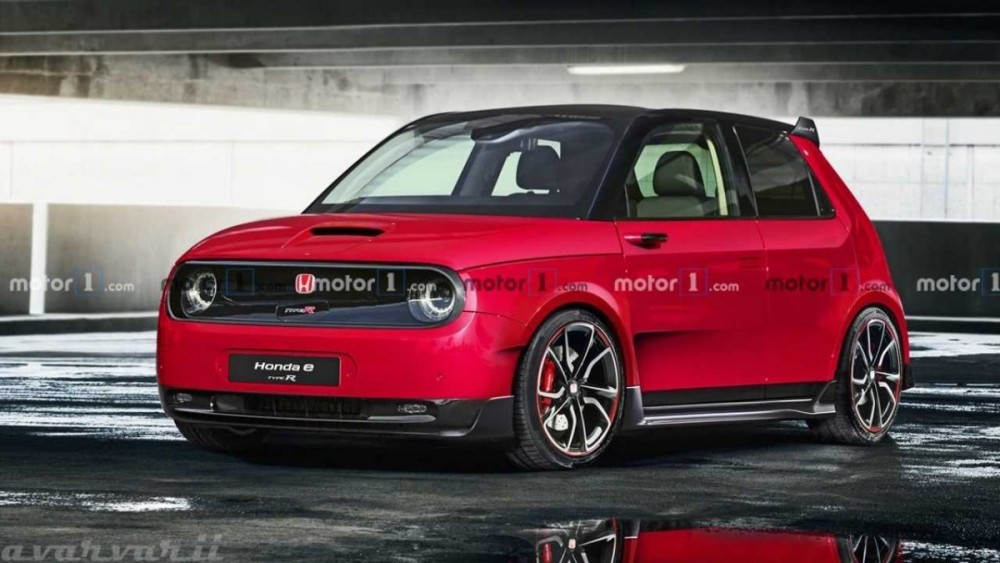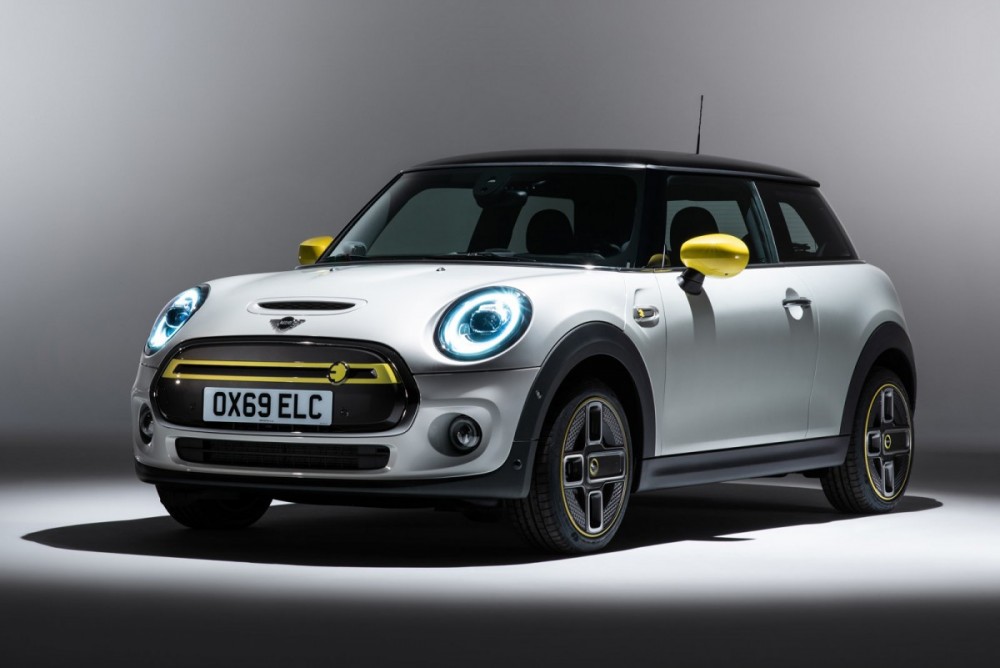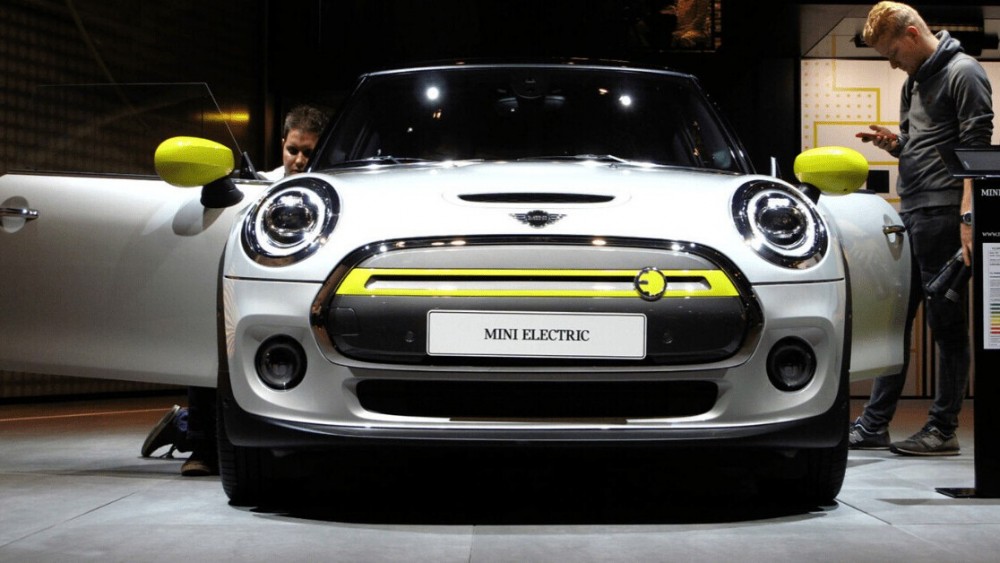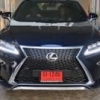Search the Community
Showing results for tags 'electric'.
-
Ever since its first showroom launch in Singapore, Tesla has received a lot of attention and hype from local drivers. Located at One Assembly in Raffles City, the sparkling mini-showroom proudly features two units of what Elon Musk calls an “affordable” electric car – the Model 3 sedan. Intending to bring clean energy solutions to individuals globally, the high-profile American brand has raised the standard through its vehicles and proved that one could achieve a powerful and fast car without fossil fuels. Tesla drivers not only save money overall but save the earth as well. With the government intending to switch to an all-electric vehicle Singapore by 2040, the American brand’s local release came at just the right time. However, the main question still stands – is buying a Tesla worth it? Are Teslas too expensive? According to Tesla’s sales portal, the Standard Range Plus Model 3 will cost $113,245* while the Model 3 Performance will go for $155,283*. Images were taken from Tesla Both prices do not include the cost of additional features and interior/exterior options, as well as COE, which means you could pay an additional $50,000 - $60,000. With the additional features, expect to pay about $173,245* for the Standard Range Plus Model 3 and $215,283* for the Model 3 Performance. For those prices, you can undoubtedly purchase something similar or more luxurious like the Renault Zoe Electric ($159,999*) or the BMW 2 Series Gran Coupe Luxury ($190,888*) and the Audi A4 ($188,016*). Although, it is worth noting that the Model 3's performance figures (0 - 100 km/h in 5.6s) obliterate every other car in its price bracket, making it an especially good deal. Audi A4 40 BMW 2 Series Gran Coupe Luxury Audi A4 45 Tesla Model 3 Images were taken from The Car Guide The Model 3 enjoys the EV Early Adopter Incentive (EEAI), which includes a 45% rebate of the ARF, capped at $20,000, and an additional reimbursement of $45,000. This rebate is the highest for any car in Singapore and its attractive discounts make drivers eager to own a piece of Elon Musk’s technology. * All prices were taken from Tesla and sgCarMart Will there be charging problems for HDB owners? After its soft launch in July, Tesla has set up three charging points on the ninth floor in Orchard Central carpark. While private estate owners can opt to install a home charger with the help of Tesla Certified Installers, consumers living in HDB estates cannot enjoy the same luxury. Given that most Singaporeans live in HDB apartments, does this mean that prospective owners are only limited to these three stations? Even though there is a limited number of Tesla V3 Superchargers in Singapore, the Model 3 is compatible with Type 2 AC and CCS2 DC fast-charging stations. This allows drivers living in HDB estates to charge their cars at various third-party charging stations by SP Group, Shell-Greenlots and BlueSG. Image was taken from Shell Greenlots If you’re afraid that there won’t be enough places to charge your vehicle, there is a wide variety of different charging stations powered by various companies across Singapore. With BlueSG having more than 1,000 points across the island, it is safe to say that finding a charging station for your shiny new Tesla will be the least of your worries. Is the cost of maintenance high? Contrary to widely held belief, the cost of maintaining a Model 3 is much more affordable than one thinks. Since Teslas are fully electric, many standard maintenance items do not apply. These include brake jobs, oil and filter changes, accessory belt replacements, engine air filter and fuel filter changes. Image was taken from AsiaOne The recommended routine maintenance includes tire rotation, brake fluid replacement, cabin air filter replacement, windscreen wipers replacement and air-conditioner servicing every two years. Overall, the cost of maintaining a Tesla is cheaper than fuel vehicles in the market. Is a Tesla still worth it? There are still a select few who believe that going electric brings more harm than good. While concerns regarding the cost of a Tesla are still circulating amongst the local driving community, the company has significant plans to expand its offerings and make its luxury sedans more affordable. Coupled with the extensive number of rebates from the government, drivers might find themselves owning a piece of extraordinary technology without paying excessively. At the end of the day, the benefit of owning a Tesla outweighs its cons. Sure, it is a lot of money to invest in a vehicle, but you can’t put a price tag on saving the environment. --- Thinking of selling your car? sgCarMart Quotz guarantees the highest selling price for your car. We’ll even give you $100 cash if you find a better offer elsewhere! Get a free quote to find out how much your car is worth today!
-
- commentary
- tesla
-
(and 3 more)
Tagged with:
-
Honda wants to electrify two-thirds of its lineup worldwide by 2030, which means that future performance vehicles from the brand could eventually be EVs. Hideki Kakinuma, the Honda Civic Type R project leader, talked to Motor Trend about what might happen: "Yes, of course, an electric Type R is possible." He indicated that the major challenge was offering the necessary performance at a reasonable price. "If all the base concept and philosophy of being a Type R is fulfilled with an electric powertrain … sure, this can happen," Kakinuma told Motor Trend. Before getting too excited about the Type R EV, it's worth reading Kakinuma's statement to Motor1.com about the future of the Type R badge. "The ‘R’ in Civic Type R has always stood for racing, so expanding into something like an SUV or crossover doesn’t make sense," Kakinuma told us. "The Civic is currently the only vehicle in the Honda lineup to meet our requirements of what a Type R needs to be." Rumors suggest that the next-gen Civic Type R could adopt a hybrid powertrain because it offers the expected driving dynamics while improving emissions. Opting for a full EV isn't the plan, yet. If an electric Type R happens, then the new Honda E could be the first to wear the moniker. "Well, this new platform, the motor and tires can all take more," Honda Assistant Large Project Leader Takahiro Shinya told Top Gear in January. "What I can say is we love Type R, it’s such a strong halo brand for us. As engineers, we want to make Type R of every model, but it’s whether the customer wants it that matters." The standard Honda E packs an electric motor powering the rear axle that's available with either 136 horsepower (100 kilowatts) or 154 hp (113 kW), and bother variants make 232 pound-feet (315 Newton-meters) of torque. A 35.5-kilowatt-hour battery offers 137 miles (220 kilometers) on a charge. In Germany, prices start at €33,470 before incentives, and the Advance trim with more power goes for an additional €3,000. Deliveries in Europe start this summer. https://www.motor1.com/news/400319/honda-electric-type-r-rumor/
-
TRANSPORT operator SMRT will bring in its first batch of 300 electric vehicles from July this year, as it aims to replace its entire taxi fleet with electric vehicles within the next five years. The fleet of electric vehicles to be launched could include various models well suited to meet the demands of the transport market. These could include sedans, station wagons and multi-purpose vehicles, SMRT said in a press statement on Tuesday. Going electric with taxis is part of SMRT's growth strategy in green businesses under Strides Mobility, its sustainable urban mobility services arm. This strategy includes developing sustainable mobility solutions and introducing mobility services using electric vehicles, including taxis, cars, vans, limousines, motorcycles and buses. Said Tan Kian Heong, president of SMRT Road Holdings: "In line with Singapore's Green Plan, we are excited to be among the first point-to-point transport operators to commit to the deployment of electric taxis on a large scale. This is a key part of our plan to incorporate principles of sustainability into each of our businesses to bring sustainable urban mobility services to our customers." https://www.businesstimes.com.sg/transport/smrt-to-progressively-replace-taxi-fleet-with-electric-vehicles-within-five-years
-
Available in 3 power options: Q4 35 (RWD, 52KWH battery, 341Km range, 168HP / 310Nm, 9 seconds 0 -100Km/h) Q4 40 (RWD, 77KWH battery, 520Km range, 201HP / 310Nm, 8.5 seconds 0 -100Km/h) Q4 50 (AWD, 77KWH battery, 488Km range, 295HP / 460Nm, 6.2 seconds 0 -100Km/h) Audi Q4 50 E-Tron S Line Audi Q4 Sportback 50 E-Tron S Line
-
SEAT co-brand CUPRA has unleashed its first all-electric car, the Born. Under the skin, the Born uses Volkswagen Group’s MEB platform (read Volkswagen ID.3), but that’s where the similarities and the differences start and end. Kicking things off with the styling, CUPRA has delivered a recipe for the perfect all-electric hot hatch. It’s angular at the front, with the surfaces looking sculpted in such a way that they pierce the air for better economy. At the side, it’s all user-friendly and accessible, with sporty nods coming in the form of a raked roofline, a contrasting side skirt, and a set of 20” alloy rims. As for the rear, CUPRA makes the Born seem more charming and softer, however yet again a sporting edge is encouraged with the “diffuser”-like bumper, angular rear lights, and the small spoiler. The Born will come with two power outputs: either 150 PS or 204 PS, with the latter offering an extra e-Boost function that will kick power up to 231 PS (which is around 227 BHP, and thus a considerable amount more than other electric “hot hatches” such as the MINI Cooper SE or the BMW i3S). CUPRA claims a 0-62 MPH time of just 6.6 seconds, and because it features high-tech lithium-ion batteries it’ll do up to 540km on a single charge, when paired with a 77kWh battery pack. With this pack, it’ll also offer 100 miles from just seven minutes of charge.
-
Great! We're finally going to have cars, albeit electric cars, manufactured in Singapore! The manufacturing facility is slated for completion in 2020, with its first electric vehicle rolling out by Dyson in the following year. You're reading correctly ...... Dyson, the maker of household appliances including bagless vacuum cleaners which it invented :) Good to diversify our economy and create more jobs! Hopefully, it will be able to rival Telsa and serve as a catalyst for more automotive makers to set up assembly plants here! https://www.channelnewsasia.com/news/business/british-technology-company-dyson-to-build-electric-car-in-singapore-10855708
- 208 replies
-
- 6
-

-
- dyson electric
- hiring
- (and 6 more)
-
@Ct3833 this one OK for you? Everything look good except for the lack of sliding rear doors.
- 5 replies
-
- 8
-

-
- volkswagen
- id.6
-
(and 2 more)
Tagged with:
-
Audi claimed that this concept is 95% representative of the final model, and the production model is expected to be unveiled in the 2nd half of 2022. Anyone noticed something familiar? Audi is resolutely pushing ahead with its "e-volution" towards electric mobility and have just unveiled the forerunner of an innovative family of fully electric, production cars - the four-door Audi A6 e-tron concept - at the Auto Shanghai 2021 show. A completely new technology architecture, the "Premium Platform Electric," or PPE for short, will serve as the technology platform for these vehicles in the future. For its part, the PPE technology will ensure that what the car's lines imply is actually translated into dynamic driving performance and everyday suitability befitting use as a primary vehicle. Specifically, this means that depending on the selected drive system and model version, an Audi A6 e-tron is expected to boast a range of more than 700 kilometers (based on the WLTP standard) in the future - and the most powerful members of the family will sprint from 0 to 100 km/h in less than four seconds. The combination of safety features and aesthetic design has always been of particular importance to Audi. That's why the small, high-resolution projectors also display warning symbols on the ground - to warn a bike rider that the car door is about to open, for example. Another four high-resolution LED projectors - inconspicuously integrated into the corners of the vehicle - generate turn signal projections. The design of these projections can be modified to address different markets and approval regions as required. The Digital Matrix LED front headlights achieve almost cinematic quality. If, for example, the Audi A6 e-tron concept is parked in front of a wall during a break to recharge the battery, the driver and passengers can pass the time playing a video game projected onto it. Instead of on a small screen in the cockpit, they'll see their respective game's virtual landscapes projected onto the wall in XXL format - and all this via the Digital Matrix LED headlights. Players can stand next to or directly in front of the vehicle for a particularly good view of the game, which is several meters wide. OK, back to my question at the start of the post...
-
SINGAPORE — Singapore will stop all new diesel car and taxi registrations from 2025, by which time eight towns will have electric vehicle (EV) charging points at all Housing and Development Board (HDB) car parks. And, by 2030, all new car and taxi registrations must be of cleaner-energy models — including electric, hybrid and hydrogen fuel cell cars — to meet the country’s goal to phase out internal combustion engine vehicles by 2040. These were among the initiatives announced by Transport Minister Ong Ye Kung in Parliament on Thursday (March 4). They are part of the Singapore Green Plan 2030 charting the Republic’s environmental targets over the next decade. Mr Ong said: “In many countries, inter-city driving is common and that causes a lot of anxiety among EV users because they are afraid of battery depletion. “But with our urban environment, Singapore is quite ideal as a test bed for the rapid adoption of EVs.” The first eight “EV-ready towns” that will be equipped with charging points at HDB car parks are Ang Mo Kio, Bedok, Chua Chu Kang, Jurong West, Punggol, Queenstown, Sembawang and Tengah. The Land Transport Authority (LTA) said that these towns were chosen because they are well spread out across the island and have many car parks with existing electrical capacity that can support charging points. The authorities will build more charging points at other HDB towns and aim to make all towns EV-ready before 2040. Under the Singapore Green Plan unveiled last month, 60,000 EV charging points will be built by 2030, more than double the target of 28,000 set last year. Giving more details on Thursday, LTA said that 40,000 of these charging points would be in public car parks and the remaining 20,000 on private premises. They will be built first at public car parks where there is spare electrical capacity, before being expanded to other car parks. Mr Ong said the authorities would focus on building slow chargers, because fast chargers require a major upgrade of almost all power substations and grid infrastructure. Right now, some fast chargers can be found at petrol kiosks, shopping malls, and industrial and commercial sites. Mr Ong said: “Where the infrastructure supports it, or where we decide to selectively upgrade the infrastructure, fast chargers can then be installed.” Efforts to build EV charging points have already started, with LTA and the Urban Redevelopment Authority launching their first tender to build more than 600 charging points at over 200 public car parks in November last year. For non-landed private residences, such as condominiums, LTA will introduce an EV Common Charger Grant to co-fund the installation of 2,000 shared chargers between July this year and December 2023. More details will be announced in the coming months. The Government will ensure that all new HDB developments will cater enough electrical capacity to support EV slow chargers at 15 per cent of their parking spots at minimum, LTA said. t will impose this requirement on new private buildings as well as buildings undergoing major redevelopment in “due course”. LTA will also launch an industry consultation later this month to determine how the private sector can take part in building more public charging points. To spearhead the new initiatives, the government agency will set up a National EV Centre to drive the adoption of such vehicles in Singapore. The centre will work with government agencies, industry partners and unions to develop new EV-related technologies and equip workers with the skills to support the presence of more EVs on the roads. In the Budget statement last month, Deputy Prime Minister Heng Swee Keat said the Government would also lower the Additional Registration Fee floor for electric cars to zero between January 2022 and December 2023. The change would make electric cars more affordable as the floor is now set at S$5,000 under the EV early adoption incentive, which kicked in on Jan 1. Under that incentive, those registering fully electric cars are given a 45 per cent rebate on the Additional Registration Fee, capped at S$20,000. The Government will also adjust road taxes for mass-market electric cars, so that their owners may pay taxes comparable to those levied on owners with internal combustion engine cars. From next year, the road tax brackets of electric cars with power ratings of 30 to 90 kilowatt (kW) and 90 to 230kW will be merged. Cars falling into this combined bracket will be subject to the present road tax formula of the lower 30 to 90kW band. With this change, electric cars owners will pay up to 34 per cent less road tax, LTA said. For example, owners of a Hyundai Kona Electric or a Kia Niro — both with power ratings of 150kW — will pay S$1,095 in yearly road taxes, instead of the S$1,447 at present. Owners of the more powerful 225kW standard Tesla Model 3 will pay S$1,500 in road taxes, down from S$2,300. These changes will also apply to owners of hybrid petrol-electric cars who now pay road taxes based on their vehicles’ maximum electric power rating. The road tax brackets for cars with power ratings of less than 30kW and more than 230kW will stay unchanged. For owners of electric and hybrid cars who have paid their road taxes beyond 2022, excess taxes paid under the existing road tax scheme will be used to offset future taxes. If the vehicle is transferred to another owner before its next road tax renewal, excess road taxes paid will offset the transfer fee. The remainder will go to the vehicle’s new registered owner.
-
Home-grown transport and engineering group Goldbell is in advanced talks to buy over an electric car-sharing outfit in Singapore. The Straits Times understands that discussions for the takeover of BlueSG's operations have gone on for about a year, and an in- principle deal has been struck. BlueSG is owned by a unit of French transportation giant Bolloré Group. It was launched in 2017 as the first electric car-sharing operation in Singapore. The company now runs a fleet of around 670 cars, with about 1,500 charging points across the island. It has around 80,000 subscribers. The imminent sale to Goldbell - a 41-year-old commercial vehicle specialist which has branched out to on-demand bus services and car subscription schemes - comes three years after a similar car-sharing service the French group owned in Paris ceased in 2018. Sources said the sale-purchase deal should be transacted at $20 million to $25 million - based on the scrap value of the battery-powered sub-compacts. It would allow Goldbell to continue running the car-sharing operations with BlueSG's current network of charging points. The Straits Times understands that the protracted nature of the sale has to do with government grants which BlueSG has been given. BlueSG was not reachable for comment, while Goldbell declined to do so. Latest information available from the Accounting and Corporate Regulatory Authority showed that BlueSG incurred net losses of $3.4 million in 2017, $7.3 million in 2018 and $9.3 million in 2019. Bolloré's car-sharing operations in Paris ended with losses despite hefty government subsidies. Singapore University of Social Sciences (SUSS) transport economist Walter Theseira said schemes such as BlueSG's face hurdles because "Singapore's public transport and private transport service options are just too good for car-sharing to make sense for many people". "Most trips would be cheaper by taxi and private-hire car than by renting a car-sharing service and driving yourself, especially after parking charges, travel to the car-sharing parking location, and so on," he added. Prof Theseira said: "Even in global cities where taxis are substantially more expensive and public transport is worse, it is hard to say that car-sharing has been a huge success," he said, noting that shared cars are "hardly the game-changer that people have initially talked about" in terms of replacing demand for private cars. Prof Theseira said the BlueSG cars are also too small for some families, and they are not allowed to be used for private-hire purposes. These limit their appeal further. But the economist who heads SUSS' Urban Transport Management Masters programme said BlueSG's charging network is viable. "It is a business model ahead of its time in Singapore," he said. "Unfortunately, the development of such networks is hamstrung by the chicken-and-egg problem - nobody living in HDB or condos will buy an EV without charging available at their home carpark, and nobody will build charging points without EV customers. "The network has potential but its value is likely to be only realised a few years from now." BlueSG's sale, if concluded, follows the exit of electric taxi operator HDT in November last year, and the demise of car-sharing firm Smove last June.
-
With the planned phasing out of combustion engines by 2040, we find out from Cars & Coffee about how an electric car might just work out well today. Thinking of getting an Electric Car (EV) in Singapore? Well, it isn't as hard as you think it is. With the government planning to phase out the sale of new cars with Internal Combustion Engines by 2040 along with added incentives, EV ownership is set to increase in the next few years. But can you make that choice today? We go to Cars & Coffee to find out more with its large lineup of cars, that also includes EVs. 1. They're fast and cool There's something that everyone can enjoy when it comes to EVs: Their ability to provide instantaneous torque. Perhaps the car manufacturer that truly represents this is Tesla. Cars & Coffee has the Model 3 sedan. With 510Nm of torque pushed out from its single electric motor, you can expect pretty rapid acceleration. But elsewhere, the Model 3 is a cool car inside and out. It sports a minimalist interior with a huge 15-inch display to control various infotainment and vehicle features, plus, an all-glass roof. And, most importantly, there's nothing short of cool about being seen in a Tesla today. 2. Small and practical, too But an electric car doesn't have to be a luxurious go-fast option. You can have them in compact, practical packages too. Check out the Honda e available at Cars & Coffee. If a practical roundabout is what you're after, the Honda e is a pretty sweet choice. And it looks cool too. It looks quirky and fun, with proportions just a tad smaller than the quintessential Honda Jazz. It's decked out in features. There's five screens displaying various driving and infotainment information. And in a bid for more efficient aerodynamics, it has cameras instead of wing mirrors - a cool party trick to show your passengers. 3. Servicing is easy As car owners, you're used to the routine of frequent oil changes, spark plugs and the like. Electric vehicles don't have to deal with the greasy, oily affair - they don't have internal combustion engines. The routine maintenance then only generally applies to things such as your brake pads and discs, tyres, and of course topping up your windshield washer fluid. It is cheaper in the long run, and thanks to the lesser maintenance, many EVs offer longer warranty periods. Cars & Coffee for example offers a five year or 130,000km warranty on the Tesla Model 3, whichever comes first. 4. Charging isn't as hard as you think it is We've grown used to seeing our fuel gauge close to empty, popping by a petrol station and filling up. It takes 10 minutes - and lets you drive for a considerable distance before ever needing to fill up again. The age-old idea that EVs take forever to charge is dead. They now charge as fast as your own mobile phone. The Honda e, for example, can charge at one of SP Group's 50kW fast chargers from 20 to 80% in under 30 minutes. And more and more charging stations will be coming up in Singapore. This year's Budget has announced that there will be 28,000 charging ports in Singapore by 2030. Another good reason to go for an EV now are reserved lots! Many malls offer reserved parking lots for electric cars, some even offering free charging! You'll never worry about finding a parking lot again. 5. Better rebates for EVs With government initiatives to encourage car buyers to choose cleaner, more efficient vehicles, EVs will stand to benefit, too. From 1 January 2021, the updated Vehicle Emissions Scheme rebate will be increased by $5,000, meaning a Band A1 vehicle will benefit from a $25,000 rebate. But that's not all when you pick an EV. The Electric Vehicle Early Adoption Incentive offers a rebate of 45% off the Additional Registration Fee for EVs, capped at $20,000. Which means, if you are planning to buy a Band A1 EV from 2021, you can benefit from a rebate of up to $45,000! So, if you have the means to get an electric vehicle today, there are certainly a lot of benefits. With the government planning to phase out the sale of internal combustion engines by 2040, why wait when you can start today? Looking for a new car? Head on down to Cars & Coffee Singapore at these locations. To get in touch, you can contact Cars & Coffee Singapore at 6266 5555.
- 1 comment
-
- electric car
- electric
-
(and 1 more)
Tagged with:
-
What we have here, is Audi's first electric car, the e-tron! It may be one futuristic sounding name, but the car's exterior isin't necessarily that wild... oh no... But the great thing is, that conservative, SUV shape gives you plenty of room for all your luggage. With 660-litres, the Audi e-tron easily passes the auntie trolley test! But wait, there's more! As you'd expect from an Audi, the cabin of the e-tron is well-designed and functional, but there is one small little feature that can become quite irksome. Can you guess what it is? Join us in the video review below to see just how fast 560Nm of electric torque makes the Audi e-tron go! Here's a quick teaser for you...
-

There are more electric charging stations than petrol stations in U.K.
chitchatboy posted a blog entry in MyAutoBlog
Here is another reason to start owning an electric vehicle in Britain. The amount of charging stations has surpassed petrol stations in Britain. According to Nissan U.K., the country has around 9,300 locations where EV owners can charge their cars and out of those, 1,600 of them has the ability to fast charging, which can bring up a typical battery’s capacity from 0 to around 80 percent in less than an hour, in cars that support it. With the introduction of the Ultra-Low Emission Zone in London, car owners are switching to EV as solutions for their daily commute, with the demand of battery-powered cars increasing by 158.1% this month alone. While EV stations have increased by quite a bit since 2011, petrol stations have been slowing decreasing and the currently count stands at 8,400.- 3 comments
-
- 2
-

-
- charging stations
- petrol
-
(and 1 more)
Tagged with:
-
https://www.channelnewsasia.com/news/singapore/qiq-electric-microcars-last-mile-journeys-qiq-pods-13006284 Come next year, some commuters may be able to make the last-mile journey between their home and the MRT station in a small, two-seater electric car. Singapore firm QIQ Global plans to launch the microcars for hire. Dubbed the QIQ Pod, it will be no bigger than 2.4m long and 1m wide. The concept is similar to the shared electric vehicles currently offered by BlueSG, said QIQ Global chief executive and co-founder Justin Sim. Mr Sim told CNA he believes there is demand for such vehicles, especially in towns such as Punggol. “For a lot of the residents in Punggol, they are still required to take a feeder service or to walk a long distance to reach the LRT (Light Rail Transit) station,” he said, adding that there is still “a lot of inefficiency” in the town’s public transport network. QIQ Global, which operates about 400 e-bikes and e-scooters in Hanoi, had previously expressed interest in Singapore's now-suspended shared e-scooter scheme. Mr Sim said he hopes the QIQ Pod will be the company's flagship product moving forward, and plans to introduce between 300 and 600 microcars in Punggol. The company intends to launch a trial by next year, he said, adding that it is in discussions with two companies in the transportation and logistics industries. To ensure that the vehicles are used for short trips, Mr Sim said there will be geo-fencing, which uses GPS or radio frequency identification technology to create a virtual geographic boundary. Unlike BlueSG cars which need to be parked at charging stations, QIQ Global intends for its microcars to be able to autonomously direct themselves to park at the nearest charging station. "It's so easy to drive you don't even need to learn how to park the car," said Mr Sim. "When you end the ride, you leave it by the curbside and it will park by itself." It also aims to employ a method called platooning, which involves a human-driven car leading a convoy of driverless cars using wireless communications. This would cut down on the number of people needed to distribute the cars to areas where they are needed. During off-peak hours, drivers would be able to use the QIQ Pods to perform deliveries, maximising the use of these vehicles, said Mr Sim. It would likely cost S$2 for an ad hoc ride lasting 30 minutes, and between S$30 and S$50 per month to use the QIQ Pod multiple times daily, he added. Those using it for logistics purposes would have to pay a monthly fee of about S$180 to S$240, Mr Sim said.
-
https://www.sgcarmart.com/news/article.php?AID=23641 First MINI Electric car.. Actually a electrified Cooper S but I think its called a Cooper SE (E for electric), priced at $163,888... 181bhp, 270Nm of torque but maxes out at 150km/hr Standard MINI good looks, the bright yellow on white visual cues outside and interior electrified me...
-
https://www.channelnewsasia.com/news/singapore/electric-car-sharing-scheme-to-hit-the-roads-dec-12-9466622 Electric car-sharing scheme to hit the roads Dec 12 The first fleet of cars for an electric car-sharing scheme will hit the roads next Tuesday (Dec 12). BlueSG, a subsidiary of French transportation firm Bollore Group, said it will deploy 80 vehicles which users can book via the BlueSG mobile app. The app will be available on the App Store and Google Play from Dec 5. By Elizabeth Neo @ElizabethNeoCNA 04 Dec 2017 02:21PM (Updated: 04 Dec 2017 10:31PM ) SINGAPORE: The first fleet of cars for an electric car-sharing scheme will hit the roads next Tuesday (Dec 12). BlueSG, a subsidiary of French transportation firm Bollore Group, said it will deploy 80 vehicles which users can book via the BlueSG mobile app. The app will be available on the App Store and Google Play from Dec 5. The company signed an agreement with the Land Transport Authority and the Economic Development Board last year to develop the electric car-sharing programme, which will see 1,000 electric cars deployed in stages. Rentals will be charged based on duration instead of distance, and users can choose from two subscription plans. Under the premium yearly membership plan, priced at S$15 a month, subscribers are charged S$0.33 per minute for a minimum booking of 15 minutes. The weekly membership plan does not charge a recurring fee and users will pay S$0.50 per minute for a minimum duration of 15 minutes. Users will be able to book the electric cars via a mobile app. (Photo: BlueSG) “We are excited about the impending official launch in Singapore, as it is the world’s second biggest electric vehicle car-sharing programme after Paris," said BlueSG managing director Franck Vitte in a news release. He told Channel NewsAsia separately that the pricing is "relatively consistent" with that of other cities in which the company operates. "We are confident that it is going to be quite successful," he said. The company also has a presence in Los Angeles, London, Turin and several French cities. In Singapore, a total of 30 BlueSG stations offering 120 charging points will be rolled out islandwide by the end of this year. Of these, 18 stations will be located in public housing estates including Tampines, Bishan and Punggol, while 10 stations will be in the city centre and its fringes and two others will be within the industrial and commercial estates at one-north and the Science Park. By 2020, the company intends to have a fleet of 1,000 electric vehicles and 2,000 charging points, Mr Vitte said, adding that third-party cars will be allowed to tap on the charging points then. "If it becomes even more successful then we will discuss with the authorities, with the Government whether we have to deploy more cars or more charging points,” he added. The new car-sharing initiative was welcomed by one industry observer who said it will introduce more Singaporeans to the idea of electric cars. "What it will help is to establish a network of charging points which has probably been a prohibitor in the past, and also show the economics of owning an electric car versus a normal car," said Mr Richard Skinner, strategy leader at PricewaterhouseCoopers Singapore. He added: “A couple of reasons why we haven't seen that many electric cars in Singapore is probably the lack of subsidies we have in Singapore. So in China, in Europe, in the United States, to establish the electric cars initially, there were quite strong subsidies. And at the same time there was also help in building the connecting points." Those interested to rent an electric car can sign up and register on BlueSG's website. Source: CNA/nc
- 81 replies
-
- 8
-

-
- electric car
- sharing
-
(and 5 more)
Tagged with:
-
https://asia.nikkei.com/Business/Technology/Japan-drone-submarine-eyes-16-hour-dive-with-plastic-battery?utm_campaign=RN%20Subscriber%20newsletter&utm_medium=JP%20update%20newsletter&utm_source=NAR%20Newsletter&utm_content=article%20link&del_type=4&pub_date=20200721090000&seq_num=13&si=%%user_id%% Japan drone submarine eyes 16-hour dive with plastic battery Sanyo tests rechargeable prototype with Kawasaki's unmanned vessel Sanyo Chemical Industries' all-polymer battery can power Kawasaki's unmanned submarine for 16 hours on one charge. YUKI MURAKAMI, Nikkei staff writerJuly 21, 2020 00:29 JST KYOTO -- Sanyo Chemical Industries' rechargeable battery made almost entirely of plastic is now powering an unmanned submarine by Kawasaki Heavy Industries in a test run, with the promise of doubling the vehicle's operation range to 16 hours. The trial presents the first commercial use of the all-polymer device made by Sanyo subsidiary APB. The battery, whose electrolytes are also made of resin, lasts twice as long as its lithium-ion cousin and boasts cheaper production costs and greater resistance to fires. Kawasaki's autonomous underwater vehicle is designed to inspect oil pipelines and other deep sea equipment. Due to the nature of the work, an internal battery would be subjected to high pressures. The all-polymer battery can withstand depths of more than 3,000 meters. APB's battery can power the vehicle for about 16 hours on a single charge, up from roughly eight for a lithium-ion battery. Mass production for the all-polymer battery is said to cost 90% less than for a lithium-ion counterpart due to the simplicity of the manufacturing process. APB, is setting up a plant in Japan's Fukui Prefecture. Full-scale production will be ready around fall 2021, with sales to begin before the fiscal year ends in March 2022. The aim is to develop a business worth hundreds of billions of yen (100 billion yen equals $934 million) within five to 10 years. The operation will focus on stationary power storage for buildings, but batteries for undersea drones have become feasible as well. APB has raised roughly 9 billion yen from eight investors through June, including trading house Toyota Tsusho and energy major Eneos Holdings. Both Nissan Motor and Sanyo have licensed polymer battery technology to APB to accelerate development.
- 17 replies
-
- 10
-

-

-
https://www.autoblog.com/2020/05/29/vinfast-vietnam-us-sales-electric-crossover/ Vietnam's VinFast plans to sell Pininfarina-designed electric crossover in the U.S. Vietnam's first home-grown automaker, VinFast, has its sights set on the American market. It plans to introduce an electric crossover before the end of 2020 and start selling it on our shores the following year. Founded in 2017, the company's range includes updated variants of the sixth-generation BMW 5 Series and the third-generation X5 named Lux A2.0 (pictured) and Lux SA2.0, respectively. It also sells a badge-engineered version of the Chevrolet Spark called Fadil. None of these cars are headed our way. Instead, the first car it hopes to sell here is a new model tentatively scheduled to make its debut at the 2020 Los Angeles Auto Show in November. VinFast hasn't unveiled the car yet, and we don't know what it will be called, but the company is enlisting the help of big names to make its dream of gaining a foothold in the American market a reality. Pininfarina will design the crossover, and LG Chem will provide a battery pack expected to deliver up to 310 miles of driving range. There's no word yet on how the company will distribute its cars in the United States; it will presumably need to find a distributor, though it could choose to handle sales in-house. Pricing information remains under wraps, too. "We expect to launch a test program in January 2021 and mass-produce the cars by July 2021," a spokesperson for the firm told Reuters. This timeline suggests the first VinFast models will arrive as 2022 models. VinFast is far from a household name, but Reuters noted it's part of Vingroup, which is one of the largest private conglomerates in Asia. It has stakes in a diverse selection of sectors including real estate, retail, healthcare, and technology. It sold 5,124 cars in the first quarter of 2020, a figure that puts it in fifth spot on Vietnam's sales chart.
-
what are the possible t n c? not interested in electric cars yet just sharing. have seen the e6 n the interior is too basic for my liking like a blast from the past. at that range top up 10k+- the MG ZS looks a little more attractive n u get more space. paying for both china make aanyway http://m.sgcarmart.com/new_cars/promo.php?CarCode=12537
-
The number of electric cars are growing on our roads, and in the statistics, it shows. In 2009, there was just a single registered fully electric passenger car on our roads, according to the Land Transport Authority. 10 years later, that number increased to 1,120. This year, MINI is putting out a new all electric model on our roads – the MINI Electric. But it doesn’t spell out the end of internal combustion engined MINIs. It is all about giving MINI buyers the power of choice, with a new electric powertrain that might suit your needs. But is going fully electric really a thing of the future, or is it something that one can adopt today? I’ve chosen the MINI Electric to ponder on the possibility of all-electric motoring. Fitting range I looked back on some of my concerns, with the first being range. I cover an average of about 20-30km a day. And my routine drive doesn’t include expressways. I spend a lot of time in start-stop traffic in the city. The MINI Electric’s range is some 200km. With a fast 50kW charger, the MINI can in fact charge to 80% in just 35 minutes. Think about it. Unless you’re charging a completely flat battery, you probably can top up the remaining charge for far less time. Plus, with constant traffic lights in my way, I could be topping up a kilometre or two of my range just from regenerative braking. I could in fact go for close to a week without needing to charge if I wanted to. With the availability of charging stations now and in the future, charging will get even more convenient. Easy chargin’ Still, charging up an electric vehicle still is a concern. As I don’t live in a landed property, and charging station access will be an issue. With more and more charging stations propping up, it will only get easier to drive something like the MINI Electric around in the future. Plus, this year’s Budget has announced that by 2030, there will be 28,000 charging points in Singapore! Until then, I can charge it at work or at home. For example, there’s a fast CCS2 SP Group charger a stone’s throw away from the sgCarMart office. The fast SP Group DC charger costs just $14 to fully charge the MINI. And back home, there’s a public charger, which offers AC Type 2 charging. The MINI Electric can take both AC and fast DC charging options. And if that isn’t enough, there are charging stations in malls. They’re reserved lots, which means even when the malls are full, you’re almost guaranteed a parking space. Some malls like Our Tampines Hub even offers free charging! But my favourite part is the MINI Electric’s pre-conditioning feature. You can program the car to turn the air-conditioning on after a set amount of time, meaning you’ll be back in a comfortably cool car by the time you’re done charging. In fact, with these free or cheap charging options available, it makes a lot of sense to drive something like the MINI Electric today. Fun to drive Some might think the introduction of all electric vehicles will spell the end of fun cars. But with the MINI Electric, that isn’t the case. One of the perks of driving an all-electric car is its instantaneous torque. And with the MINI, you get to zip around traffic with ease with its pint-sized proportions. While instant torque can be fun, having a car that responds well to driver inputs brings about an enthusiastic experience behind the wheel. There’s good news. That go-kart feeling that everyone raves about is ever present in the MINI Electric. In fact, it’s even more fun. Because having the battery packs down low allows for a lower centre of gravity. In fact, its centre of gravity is at least 30mm lower than the MINI Cooper S 3-Door. With a low weight of just over 1.3 tonnes, coupled with its 184hp and 270Nm of instant torque, the MINI Electric is the perfect recipe for a fun-to-drive city car. Clean 'n' green The best part of all this is that you’re having a fun car with no tailpipe emissions. And there’s no noise pollution, too. While electricity production is not free from emissions, it is still far less than an ICE-powered car. What about manufacturing emissions? Well, MINI also didn’t have to create a completely new manufacturing line for the Electric. The same tooling and processes used to manufacture the Cooper 3-Door is still largely used, with the Electric’s battery situated where the fuel tank would in a petrol-driven variant. While the MINI Electric is a green option now, it’ll continue to be a greener option in the future, as the government adopts more incentives and tax breaks on Additional Registration Fees starting next year. Still the quirky, lovable MINI We love MINIs for their proportions, good looks and character behind the wheel. Very few cars can evoke the same emotions a MINI can. With the MINI Electric, that’s all still intact. To everyone, it is still most recognisable as a MINI. The only difference is that this one is quieter, and you charge it up with electricity, instead of filling it up with fuel. With its good looks stirring emotions, with a sustainable powertrain, the MINI Electric is a reasonable all-electric car definitely I can see myself driving and living with every day.
-
Just as we are having a lengthy discussions about the old XJ in the unusual car thread, an all new model is on the horizon, scheduled to be launched before turn of the year, and here are some spy shots & info for those interested. Jaguar's XJ flagship sedan bowed out at the end of 2019 but a successor based on a new platform and offering battery-electric power has been spotted testing for the first time. The new XJ sticks to the coupe-like format of its predecessor but modernizes it with fresh details. The daytime running lights of the headlights look similar to the design used in the new Land Rover Defender, while we know the taillight graphic will be similar to the design used on the latest Jaguar XE. Jaguar dropped a teaser for the new XJ during the 2019 Frankfurt International Motor Show. It revealed that the taillight will likely span the full width of the rear, too. Underpinning the car is Jaguar Land Rover's new Modular Longitudinal Architecture (MLA) platform. This is actually be the first application of the platform which will eventually underpin almost every model in the Jaguar Land Rover portfolio. The platform supports mild-hybrid, plug-in hybrid and battery-electric powertrains. In the case of the XJ, the car is expected to arrive with electric power only but later offered with hybrid options. Expect battery capacity to meet or exceed the 90-kilowatt-hour rating of Jaguar's I-Pace. The new XJ will be built at the same Castle Bromwich plant in the United Kingdom where the previous XJ ceased production last July. In the time since, the plant has undergone a transformation to turn it into an EV hub for Jaguar Land Rover; it will also be the automaker's main source for batteries and electric motors.
-
Latest news Reuters reports about rumors of a new National Car Project by the new PM. Will this be the next big thing in the automotive world? That remains to be seen.
-
Hi Mods, please consider creating a thread purely to discuss hybrid or electric vehicles. This is the future of automobiles and it would be good to have a common area to post such related topics.
-
Let embrace the EV storm, from CHINA. To those that said China brand is dead in Singapore, think again. China is now leading the EV market, and several established auto manufacturers are actually trying to collaborate with these Chinese EV startup to gain entry into the EV segment. Denza X, an electrified crossover, is a product of the joint venture between Daimler and China’s BYD, but more importantly, the design child of the former. Thus Denza X has unashamedly incorporates Mercedes-Benz influences, from the seat designs, to the trimmings, air vents and everything in between. If you’ve driven any recent Benz’s, you’ll feel right at home here. Earlier this year, China’s EV brand Denza, a 50:50 joint venture between BYD and Daimler, presented the sleek Concept X designed by Mercedes-Benz. Since things move really fast in China’s auto industry, the company has already revealed the production model that’s called the Denza X. The midsize crossover stays remarkably close to the concept from a styling standpoint, although the pop-out door handles and rearview cameras haven’t made it to the production model. The bumpers have also been modified, as have the lights. Inside, the 4.89-meter (192.5-inch) long SUV offers seven seats and a dashboard dominated by a massive center display that can rotate, changing its orientation from portrait to landscape and back. The Denza X also features a fully digital instrument panel. Chinese customers will be able to choose from two powertrains, a plug-in hybrid and an all-electric. The PHEV combines a 192 PS (189 HP) 2.0-liter turbo-four gasoline engine, two electric motors, and a battery. The motor mounted on the front axle delivers 150 PS (148 HP) while the one at the back produces 245 PS (242 HP). It’s the same powertrain found on the BYD Tang, with which the Denza X shares its underpinnings. With a usable output of more than 400 PS (396 HP), the plug-in hybrid model is said to accelerate from 0 to 100 km/h (62 mph) in under 5 seconds. As for the all-electric version, it’s powered by a single electric motor delivering 245 PS (242 HP) and can cover around 500 km (311 miles) on a single charge according to the NEDC cycle. Denza will release more details about its new model at the November launch, with deliveries in China expected to start in early 2020.











.png)











